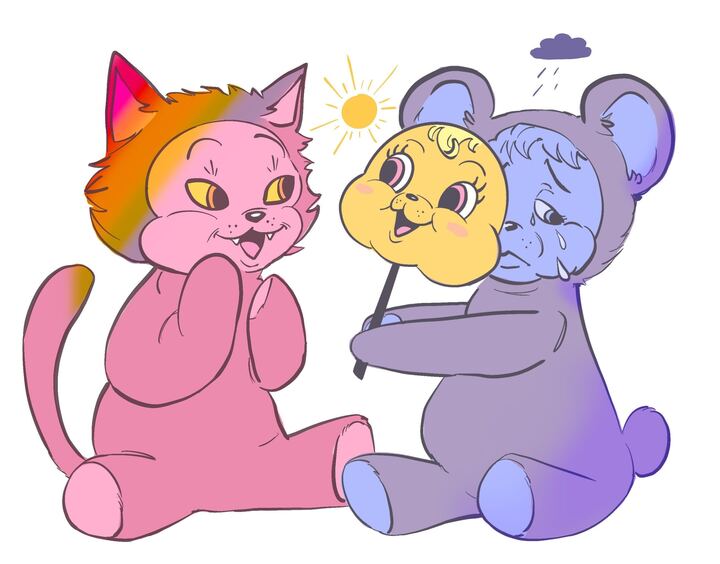My high school graduation quote, handpicked by a talented friend of mine, comes from a widely read children’s story: “You have brains in your head. You have feet in your shoes. You can steer yourself any direction you choose. You’re on your own. And you know what you know. And YOU are the one who’ll decide where to go.”
While the wise words of Dr. Seuss feel safe and comforting, the pressures of parents, schools and society placed upon high-achieving students wreak havoc on the mental health of college students, and current resources simply aren’t enough.
I wasn’t scared to start college. I’d always been a high achiever and was lumped in with some 200 other high achievers; we were complicit, putting on a happy face even though we were tired from our jobs, our six Advanced Placement classes, cross country practice and, of course, volunteering. We were ready to excel in college and to continue putting up the front that everything was all right, even when it wasn’t.
Referred to at the University of Pennsylvania as “Penn Face” and at Stanford as the Duck Syndrome—wherein a duck looks like it is drifting smoothly across the water, but underneath the surface it paddles nonstop—burnout, mental struggle and exhaustion are ubiquitous in college.
The Jan. 2014 death of University of Pennsylvania student Madison Holleran didn’t shock or confuse me. Even finding out that Holleran was the third of six Penn students to commit suicide in 13 months didn’t shock me. The way I found out was ironic: a high school friend who attended Penn, and had recently confessed to me that he was taking a leave of absence for mental health, sent me the ESPN article about it. (Holleran was a student athlete.) I was just thankful the article wasn’t about him.
Maybe it was foreshadowing or just an indication of a larger trend, but a few months after that another highschool friend of ours was found dead of apparent suicide. I remember finding out around midterms, being incredibly exhausted from studying and just sobbing uncontrollably. The friend who died was the same kid who helped me when I was struggling in our AP Calculus class; he was incredible, brilliant, hard-working, overly involved and popular—just like Holleran.
Nationally, the suicide rate among 15 to 24-year-olds has steadily increased since 2007: from 9.6 deaths per 100,000 to 11.1 in 2013. Active Minds, a mental health organization with over 400 chapters on campuses nationwide, estimates there are approximately 1,100 college student suicides each year.
Struggling with depression and other mental health issues is not an uncommon situation for college students. Another friend from high school, Hannah, was an all-star headed to Columbia University. Hannah experienced similar and overwhelming pressure while at Columbia and took a leave
of absence.
“While I was experiencing depression at Columbia, instead of the school offering help, they pressured me to take time off by putting me on disciplinary probation and kicking me out of housing,” she explained. “I felt like they only saw me as a liability, exacerbating my problems.”
Hannah is one of many who believe that mental health care needs to be more accessible to students.
“Destigmatizing mental problems and eliminating the shame factor in having a problem is crucial,” she said. “So many people refuse to seek help because it is viewed as a weakness.”
Kathryn DeWitt chronicled her own struggle with suicidal thoughts and depression at Penn in a blog post.
“It’s hard to overcome this Penn attitude that I am slacking off by taking a semester off, that I should just push through it to get better, or that I am running away in weakness,” Dewitt writes. Her own experiences echo Hannah’s and point to the damaging effect of social media on already fragile students.
The careful curation of an Instagram or Facebook profile is the hallmark of the student who has their stuff together. Posting beautiful filtered selfies as the sun sets and you leave the library only to be followed by the perfect picture of you and the gang at a party later that evening sets a tone of effortless excellence. Students like Holleran and DeWitt, while wildly impressive, simply compare, despair and fall further into the trap of depression.
It’s clear that the mental health resources are lacking in this country, in particular at colleges. When someone expresses suicidal thoughts, depression or other mental health concerns—to their RA, their counselor, their professor, whoever—they are either put on suicide watch, with the cops called and hospitalization likely, or sent to Counseling and Psych Services where they’ll meet a triage person who will briefly listen, record and send them on their way.
Destigmatization of mental health issues and compassionate healthcare are necessary for the health of students. If you fear you are going to be a disappointment or failure because of a low test score or a shorter resume than a classmate, know that you aren’t alone.








